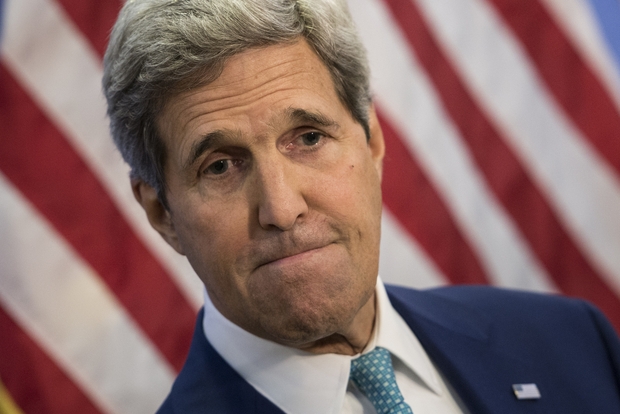Palestine and Israel: Why the two-state solution looks dead

Question: What do Mahmoud Abbas, the Palestinian president, and Bezalel Smotritz, the most nationalist member of the ultra-right faction in the already nationalist Jewish Home party, have in common?
Answer: They have never met - and probably never will. But between them they have managed, during the past few weeks, to shake the already crumbling belief that the two-state solution is a viable way to end the Israeli-Palestinian conflict.
Abbas did so in his speech at the UN General Assembly in New York; for Smutritz, it was through the political programme adopted by his National Unity faction.
From 1967 onwards, the political "division of labour" – as it is perhaps best termed - in Israel meant that the left or centre-left was supposed to propose or promote initiatives to end the Israeli-Palestinian conflict. Meanwhile the role of the right was to fail them by building more settlements in the West Bank and Gaza.The right's efforts are not the sole reasons for the failure of these so-called peace initiatives, which were all based on some sort of Israeli withdrawal from Palestinian territories, along with autonomy or independence for their Palestinian residents. But they certainly helped to bring about their failure.
The failure of two-state solution
Therefore, for many years the Israeli right has not felt compelled to offer any vision for Israeli rule over the territories it occupied in 1967 beyond the very vague idea of a Greater Israel. Instead, it has believed that the widening and deepening of the settlements in the West Bank and Gaza would be enough.
Yet during the last several years the Israeli right’s attitude has changed, more so since the establishment of the current right-wing coalition government. On the one hand, victory in the 2015 elections, the third consecutive win for Prime Minister Benyamin Netanyahu, strengthened the right's conviction that its majority is secure for many years to come and that the left has no chance of winning elections anytime soon.
This combined feeling of permanent victory over the left and alleged defeat of the two-state model has given many right-wing leaders a sense of self-confidence, enabling them to venture into territories they dare not enter before. These include proposing their own seemingly detailed plans and visions for the future of the Israeli-Palestinian conflict.
As the peace process has lost momentum by the day, so the political scenery in Israel has changed
As the peace process has lost momentum by the day, so the political scenery in Israel has changed.
The Zionist left seems unable to come up with any new ideas to restart the peace process. This was evident in an interview given in September by Shlomo Ben Ami, the former foreign minister, who participated in the talks with the Palestinians at Camp David and Taba during Ehud Barak's government in the second half of 2000.
The two-state solution, said Ben Ami, is the "redemption of the Zionist dream", but for the time being it is not "attractive enough" for both sides. Unfortunately, only an event with "nearly apocalyptic" features can bring it about, according to Ben Ami.
Making apartheid official policy
Yet while Ben Ami and others from the old Zionist left are waiting for the apocalypse, right-wing thinkers and politicians have started to produce new plans.
These ideas differ from each other, but all share one thing: the negation of any Palestinian state west of the Jordan river.
Yet the end of the two-state model did not mean that these ideas favoured the establishment of a democratic state between the River Jordan and the Mediterranean. With very few exceptions, all of these nationalist politicians rejected the idea that Palestinians in the West and Gaza would enjoy the same rights as Jews. In short, they proposed different variations of an apartheid state.
Miki Zohar, an MP from Netanyahu's Likud party, suggested that Israel will annex the whole of the West Bank, while giving Palestinians only residency rights, meaning that they could vote for their local councils but not for the Israeli parliament.
Others ave proposed that the Palestinians will become Jordanian citizens, able to vote for the Jordanian parliament, while living under full Israeli rule.
Smotritz went one step further. According to his "subjugation plan", Israel will officially annex the West Bank and will offer the Palestinians three options:
- to emigrate out of Palestine with the help of the Israeli authorities
- to accept living in a "Jewish state" without political rights
- to face heavy repression towards those Palestinians who refuse to give up their national aspirations
Three weeks ago, the National Unity faction, which is a part of the Jewish Home party, adopted Smotritz's plan. This is the first time in Israeli history that a coalition party (the National Unity fraction has a minister in the government and Somtritz himself is deputy parliamentary speaker) has adopted full-blown apartheid and transferist ideas as its official political agenda.
This is the first time in Israeli history when a coalition party has adopted full blown apartheid and transferist ideas as its official political agenda
This is, of course, a very dangerous precedent and may lead to legitimisation of extreme and violent measures against the Palestinians.
But at the same time it is an acknowledgement that the state of occupation, started in 1967, cannot go on forever, that the status quo cannot be a permanent solution.
Netanyahu: It's over
If Israel refuses to accept an independent Palestinian state, as it does now, then it must face the prospect of a one-state solution, whether through apartheid, as Smotritz suggests, or through democracy.
This is where Abbas' speech comes into play. Apart from creating a new space for discussion within Palestinian society, it also emphasises the challenge Israel is facing now.
Until recently, calls for a democratic one-state solution were restricted to non-Zionist politicians or activists.
The old separation model of a Palestinian state and a Jewish state, Netanyahu is saying, is over
But now such voices are heard on the Israeli right. President Reuven Rivlin is among those, although he does not wish to see Gaza as part of this unitary state and will not accept the right of return for Palestinian refugees.
Netanyahu himself has hinted that he stands at a crossroads. In his speech during a ceremony last month to celebrate the 50th anniversary of the Jewish settlements in the West Bank, he declared that no "Jewish or Arab settlement" will be removed in the framework of any peace agreement with the Palestinians.
The old separation model of a Palestinian state and a Jewish state, he is saying, is over.
As some commentators rightfully noted, Abbas did not give any details on how this single state will look or how it will be achieved.
But the very fact that he pushed this idea from the rear into the front of the Israeli-Palestinian conflict may have wide implications further down the road.
- Meron Rapoport is an Israeli journalist and writer, winner of the Napoli International Prize for Journalism for an inquiry about the stealing of olive trees from their Palestinian owners. He is ex-head of the news department at Haaretz, and now an independent journalist.
The views expressed in this article belong to the author and do not necessarily reflect the editorial policy of Middle East Eye.
Photo: An Israeli settler stands next to burning furniture during scuffle with security forces at the Amona outpost, northeast of Ramallah, on February 1, 2017 (AFP)
This article is available in French on Middle East Eye French edition.
Middle East Eye propose une couverture et une analyse indépendantes et incomparables du Moyen-Orient, de l’Afrique du Nord et d’autres régions du monde. Pour en savoir plus sur la reprise de ce contenu et les frais qui s’appliquent, veuillez remplir ce formulaire [en anglais]. Pour en savoir plus sur MEE, cliquez ici [en anglais].







